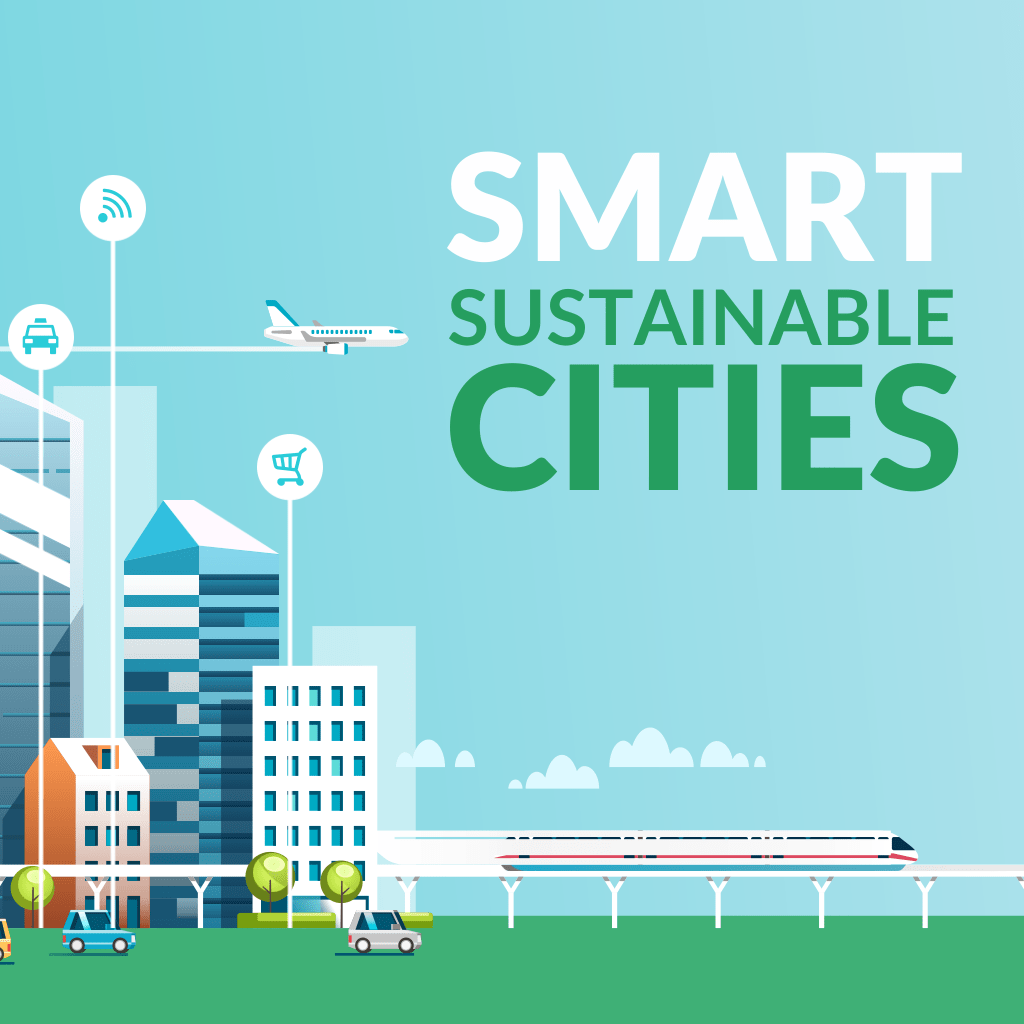Sustainable living refers to a lifestyle that aims to reduce an individual’s or community’s negative impact on the environment and promote the conservation of natural resources for the benefit of future generations. It involves making conscious choices and adopting practices that minimize waste, conserve energy and water, and promote the use of renewable resources.
Here are some key aspects of sustainable living:
- Energy conservation: Reducing energy consumption is crucial for sustainable living. This can be achieved by using energy-efficient appliances, improving insulation in homes, and utilizing renewable energy sources like solar or wind power.
- Waste reduction and recycling: Minimizing waste production and practicing recycling are important aspects of sustainable living. This includes reducing single-use items, composting organic waste, and recycling materials such as paper, plastic, glass, and metal.
- Water conservation: Conserving water is essential, especially in regions experiencing water scarcity. Installing low-flow fixtures, fixing leaks, collecting rainwater, and using water-efficient practices in gardening and landscaping are effective ways to reduce water consumption.
- Sustainable transportation: Opting for eco-friendly transportation methods, such as walking, cycling, or using public transportation, reduces greenhouse gas emissions and promotes sustainable living. Electric vehicles or carpooling are also sustainable alternatives to traditional gasoline-powered cars.
- Responsible consumption: Choosing products and services that are sustainably sourced, produced, and packaged helps reduce environmental impact. Supporting local businesses and buying second-hand or durable goods are examples of responsible consumption.
- Food choices: Adopting a sustainable diet involves consuming locally sourced, organic, and seasonal foods. Reducing meat consumption, supporting sustainable farming practices, and minimizing food waste are important aspects of sustainable food choices.
- Conservation and preservation: Protecting natural resources and biodiversity is crucial for sustainable living. This can be achieved through efforts such as planting trees, preserving natural habitats, and supporting conservation organizations.
- Education and awareness: Raising awareness about sustainable living practices through education and community engagement is vital. Sharing knowledge, participating in environmental initiatives, and encouraging others to adopt sustainable habits contribute to a more sustainable society.
By incorporating these practices into our daily lives, we can contribute to a more sustainable future and help preserve the planet for generations to come.
what is Buildup Recycling Capability ?
“Buildup Recycling Capability” is not a commonly used term or phrase in the context of sustainability or waste management. However, based on the words used, it could refer to the process of enhancing or developing the capacity and infrastructure for recycling within a particular system or organization.
Recycling capability refers to the ability to effectively collect, sort, process, and transform waste materials into new products or materials. It involves establishing or improving the necessary facilities, technologies, and systems to handle recyclable materials and ensure their proper treatment.
“Buildup” in this context may imply the act of strengthening or expanding existing recycling capabilities or creating new ones. This could involve increasing the number and accessibility of recycling bins, establishing recycling centers or facilities, implementing efficient sorting and processing methods, and raising awareness and participation in recycling programs.
Enhancing recycling capabilities is crucial for promoting sustainable waste management practices and reducing the amount of waste sent to landfills or incineration. It supports the circular economy model by enabling the transformation of waste into valuable resources, reducing the extraction of raw materials, and minimizing environmental impact.
Overall, “buildup recycling capability” likely refers to the process of developing or improving the infrastructure and practices necessary to effectively recycle waste materials within a specific context or organization.
when it required Buildup Recycling Capability ?
The need to build up recycling capability can arise in various situations and contexts. Here are a few scenarios where it may be required:
- Increasing waste volumes: As the volume of waste generated increases, existing recycling infrastructure may become insufficient to handle the growing demand. In such cases, building up recycling capability becomes necessary to accommodate the larger quantities of recyclable materials.
- Limited or absent recycling infrastructure: In some regions or communities, there may be a lack of proper recycling infrastructure. This could be due to inadequate collection systems, processing facilities, or recycling programs. Building up recycling capability is necessary to establish the necessary infrastructure and systems to enable effective recycling practices.
- Legislative requirements or targets: Governments may introduce legislation or set recycling targets to promote sustainable waste management practices. Compliance with these requirements may necessitate building up recycling capability to meet the specified goals and achieve higher recycling rates.
- Shifting waste management priorities: If there is a shift in waste management priorities towards sustainability and resource conservation, building up recycling capability becomes crucial. This can occur as a response to environmental concerns, public pressure, or a desire to transition to a circular economy model.
- Industry or organizational initiatives: Companies or industries aiming to reduce their environmental footprint may embark on initiatives to improve recycling capabilities within their operations. This could involve investing in recycling infrastructure, collaborating with recycling partners, or implementing internal recycling programs.
- Population growth or urbanization: With population growth and urbanization, the amount of waste generated typically increases. This may strain existing recycling systems and necessitate the buildup of recycling capability to handle the growing waste volumes.
- Technological advancements: Technological advancements can improve recycling processes, enhance material recovery rates, and enable the recycling of previously non-recyclable materials. When new technologies become available, building up recycling capability may be required to adopt and integrate these innovations into existing recycling practices.
It’s important to note that the specific requirements for building up recycling capability will vary depending on the unique circumstances and objectives of a given situation.
who it required Buildup Recycling Capability ?
Building up recycling capability is required by various entities and stakeholders involved in waste management and sustainability efforts. Here are some examples:
- Government bodies: Government agencies at the local, regional, or national level often play a crucial role in waste management and recycling initiatives. They may need to invest in infrastructure, develop recycling policies and regulations, and provide support and incentives to encourage the buildup of recycling capability within their jurisdiction.
- Municipalities and local authorities: Local governments are responsible for waste management services in many areas. They may need to invest in recycling infrastructure, establish collection systems, and educate and engage the community to build up recycling capability at the local level.
- Recycling industry and businesses: Recycling companies and organizations involved in waste management have a vested interest in building up recycling capability. They may need to expand their facilities, invest in advanced sorting and processing technologies, and establish partnerships with other stakeholders to improve recycling rates and maximize resource recovery.
- Non-governmental organizations (NGOs): Environmental organizations and NGOs often work towards promoting sustainable practices, including recycling. They may engage in advocacy, awareness campaigns, and community-based initiatives to build up recycling capability and encourage responsible waste management.
- Educational institutions: Schools, colleges, and universities can play a significant role in building up recycling capability. They can implement recycling programs, educate students and staff about recycling practices, and serve as hubs for research and innovation in waste management.
- Businesses and industries: Companies across various sectors can contribute to building up recycling capability. They can implement recycling programs within their facilities, promote sustainable packaging and waste reduction strategies, and support initiatives to improve recycling infrastructure and technologies.
- Community and individuals: Individuals and communities have a vital role to play in building up recycling capability. By participating in recycling programs, practicing proper waste separation, and supporting local recycling initiatives, individuals can contribute to the overall effort of sustainable waste management.
It is a collective responsibility, and collaboration among these stakeholders is often necessary to effectively build up recycling capability and achieve sustainable waste management goals.
where it required Buildup Recycling Capability ?
Building up recycling capability is required in various settings and locations. Here are some common contexts where it is necessary:
- Residential areas: Recycling capability is essential in residential areas, including neighborhoods, apartment complexes, and housing developments. Establishing proper collection systems, providing recycling bins, and educating residents about recycling practices are crucial to promote recycling at the household level.
- Urban centers and cities: With high population densities and significant waste generation, urban centers often require a buildup of recycling capability. This involves developing recycling infrastructure, implementing efficient collection systems, and establishing recycling centers or facilities to cater to the recycling needs of the urban population.
- Industrial and commercial sectors: Industries and commercial establishments generate substantial amounts of waste, including packaging materials, production byproducts, and office waste. Building up recycling capability in these sectors involves implementing recycling programs, adopting waste reduction strategies, and collaborating with recycling partners to handle their specific waste streams.
- Educational institutions: Schools, colleges, and universities are important locations for promoting recycling and sustainability. Building up recycling capability in educational institutions involves setting up recycling programs, educating students and staff about recycling practices, and incorporating recycling infrastructure into campus facilities.
- Public spaces and events: Public spaces such as parks, shopping centers, and entertainment venues require recycling capability to manage waste generated by visitors. Providing recycling bins, implementing proper waste management systems, and conducting waste separation efforts are necessary to ensure effective recycling in these settings. Additionally, events such as festivals, conferences, and sporting events also require temporary buildup of recycling capability to handle the waste generated during the event.
- Rural and remote areas: Building up recycling capability is not limited to urban areas. It is equally important in rural and remote regions where waste management infrastructure may be limited. Developing recycling programs, establishing collection points, and promoting community involvement are vital for sustainable waste management in these areas.
- Developing countries: Many developing countries face significant waste management challenges. Building up recycling capability becomes crucial in these contexts to improve waste management practices, reduce pollution, and promote sustainable development. This may involve investments in infrastructure, technology transfer, and capacity-building initiatives.
It’s important to note that the specific requirements for building up recycling capability will depend on the unique characteristics and needs of each location. Local governments, waste management authorities, and community organizations often play a key role in driving these efforts based on their specific contexts and resources available.
how it required Buildup Recycling Capability ?
Building up recycling capability involves several key steps and actions. Here are some common ways in which it can be achieved:
- Assessing current recycling infrastructure: Evaluate the existing recycling infrastructure and systems to identify strengths, weaknesses, and gaps. This assessment can help determine the areas that require improvement and guide the buildup process.
- Setting goals and targets: Establish clear goals and targets for recycling rates, waste diversion, or resource recovery. These targets provide a benchmark and help track progress in building up recycling capability.
- Investing in recycling infrastructure: Allocate resources and funding to develop and improve recycling infrastructure. This may include establishing recycling centers, upgrading sorting and processing facilities, and implementing efficient collection systems.
- Implementing recycling programs: Develop and implement recycling programs tailored to specific contexts, such as residential, commercial, or institutional settings. This involves educating and engaging stakeholders, providing recycling bins or containers, and establishing collection schedules and guidelines.
- Enhancing collection systems: Implement effective collection systems to ensure convenient and accessible recycling options for individuals and businesses. This may involve deploying curbside collection, establishing drop-off points or recycling centers, and promoting proper waste separation.
- Educating and raising awareness: Conduct educational campaigns and outreach activities to raise awareness about recycling and sustainable waste management practices. Provide information on the benefits of recycling, proper sorting techniques, and the environmental impact of waste.
- Collaborating with stakeholders: Foster collaboration among various stakeholders, including government agencies, businesses, non-profit organizations, and the community. Partnerships and collaborations can help leverage expertise, resources, and knowledge to build up recycling capability more effectively.
- Supporting research and innovation: Encourage research and innovation in recycling technologies and practices. Support initiatives that explore new methods for recycling difficult-to-process materials, improve sorting technologies, or enhance recycling efficiency.
- Policy and regulatory support: Develop and enforce supportive policies and regulations that incentivize recycling and provide a conducive environment for building up recycling capability. This may include introducing recycling mandates, providing tax incentives, or implementing extended producer responsibility (EPR) programs.
- Monitoring and evaluation: Regularly monitor and evaluate the progress and impact of the built-up recycling capability. Collect data on recycling rates, waste diversion, and resource recovery to assess the effectiveness of recycling programs and identify areas for further improvement.
Building up recycling capability requires a multi-faceted approach, involving infrastructure development, awareness building, stakeholder engagement, and policy support. It is an ongoing process that requires continuous efforts and adaptability to meet changing needs and environmental goals.
case study Buildup Recycling Capability ?
Case Study: Building up Recycling Capability in City X
Overview: City X is a mid-sized urban center facing challenges in waste management and recycling. The city’s landfill was nearing its capacity, and there was a need to reduce waste sent to the landfill while promoting sustainable practices. To address these issues, City X embarked on a project to build up its recycling capability.
- Assessing Current Infrastructure: City X conducted a comprehensive assessment of its waste management infrastructure, including the existing recycling programs, collection systems, and recycling facilities. The assessment identified areas for improvement, such as limited access to recycling bins in public spaces and a lack of processing capacity for certain recyclable materials.
- Setting Goals and Targets: City X set ambitious goals to increase recycling rates and waste diversion. The targets included achieving a 50% recycling rate within five years and diverting 70% of recyclable materials from the landfill. These goals provided a clear vision and direction for the project.
- Investing in Infrastructure: City X secured funding to invest in recycling infrastructure. This included the establishment of a Materials Recovery Facility (MRF) equipped with advanced sorting technologies to efficiently process recyclable materials. Additional recycling drop-off points were also established in key locations throughout the city.
- Implementing Recycling Programs: City X launched a city-wide recycling education campaign to raise awareness among residents about the importance of recycling and proper waste separation. Educational materials, including brochures and online resources, were distributed, highlighting the benefits of recycling and providing guidelines on sorting different types of waste.
- Enhancing Collection Systems: City X upgraded its collection systems to ensure easy and convenient access to recycling options. Curbside recycling collection was expanded, and residents were provided with separate bins for recyclables. Public spaces, parks, and commercial areas were equipped with clearly labeled recycling bins to encourage recycling on the go.
- Collaborating with Stakeholders: City X formed partnerships with local businesses, waste management companies, and community organizations to collaborate on building up recycling capability. These partnerships facilitated the sharing of resources, expertise, and knowledge to optimize recycling efforts. Non-profit organizations were involved in organizing recycling drives and community engagement activities.
- Policy and Regulatory Support: City X introduced supportive policies and regulations to encourage recycling. This included mandatory recycling requirements for certain businesses and institutions, incentivizing waste reduction and recycling practices. The city also implemented a pay-as-you-throw system, where residents paid for garbage collection based on the volume of waste generated, further incentivizing recycling.
- Monitoring and Evaluation: City X established a robust monitoring and evaluation framework to track the progress of its recycling initiatives. Data on recycling rates, waste diversion, and landfill usage were regularly collected and analyzed. The findings guided adjustments and improvements in the recycling programs and infrastructure as needed.
Results: Through the buildup of recycling capability, City X achieved significant improvements in waste management and recycling. Key outcomes included:
white paper on Buildup Recycling Capability ?
However, I can provide you with an outline or key points that can serve as a starting point for developing your white paper on Buildup Recycling Capability. Here’s a suggested outline:
- Introduction
- Background and significance of recycling in waste management
- Importance of building up recycling capability
- Challenges in Recycling
- Overview of the current waste management landscape
- Identifying barriers and limitations to effective recycling
- Building up Recycling Capability: Strategies and Approaches
- Assessing existing recycling infrastructure and identifying gaps
- Setting goals and targets for recycling rates and waste diversion
- Investing in recycling infrastructure and technologies
- Enhancing collection systems and waste separation methods
- Educating and raising awareness among stakeholders
- Collaborating with government, businesses, and communities
- Policy and regulatory support for promoting recycling
- Monitoring, evaluation, and continuous improvement
- Case Studies
- Highlighting successful examples of building up recycling capability
- Discussing challenges faced and lessons learned
- Economic and Environmental Benefits
- Exploring the positive impacts of improved recycling capability
- Cost savings through reduced waste disposal and resource recovery
- Environmental benefits such as reduced landfill usage and carbon emissions
- Policy and Legislative Considerations
- Examining policy frameworks and regulations that support recycling
- International best practices and case studies
- Recommendations for Future Action
- Identifying areas for further improvement and innovation
- Policy recommendations for governments and institutions
- Encouraging collaboration and knowledge-sharing
- Conclusion
- Recap of key points discussed
- Call to action for stakeholders to prioritize building up recycling capability
Remember, this is just an outline, and you should expand each section with relevant research, data, case studies, and analysis to provide a comprehensive and well-rounded white paper on the topic.






